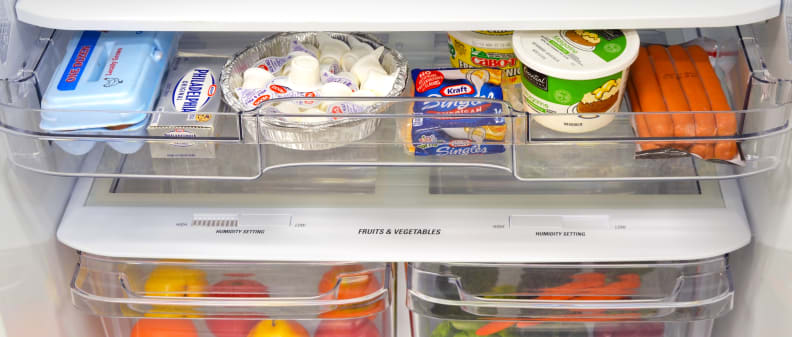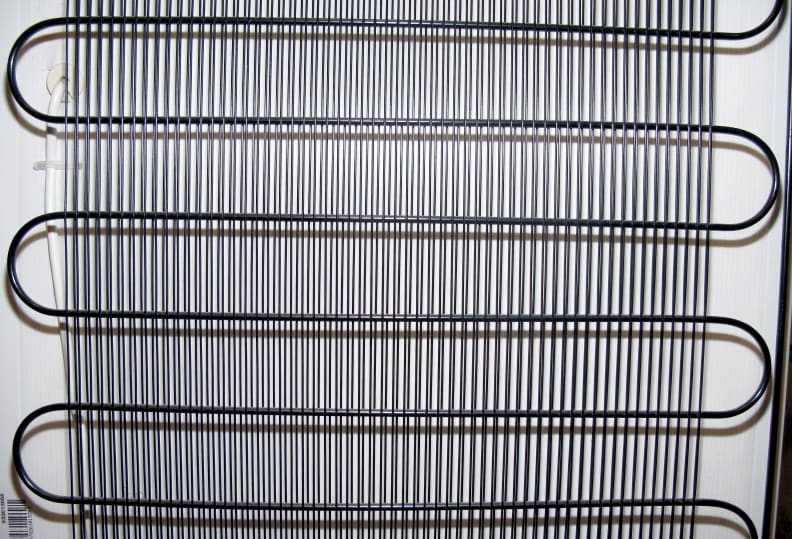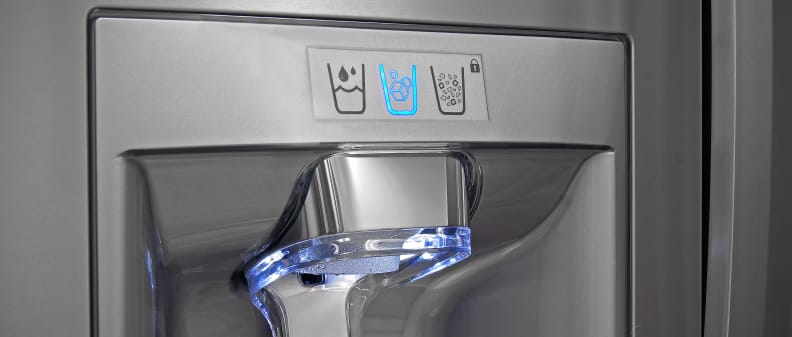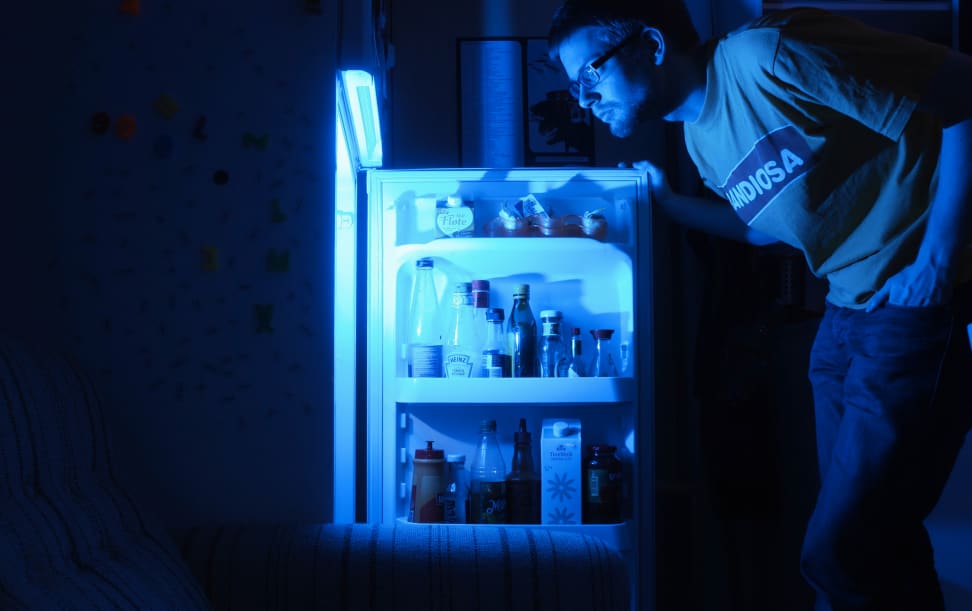How to Make Your Fridge More Efficient
These simple tweaks can lower your utility bill.
Products are chosen independently by our editors. Purchases made through our links may earn us a commission.
Modern refrigerators are far more efficient than they used to be, but they still draw a lot of power—often more than any other appliance in your home.
If you really want to save money on your energy bill—and limit your environmental impact—you should probably upgrade to a more efficient model. If that's out of the question, there are steps you can take to make your existing machine more utility-friendly. Follow this guide to cut down on your fridge's energy use, and save some money while you're at it.
Keep it Stocked
Empty fridge space helps no one. It looks depressing, limits your culinary options, and—perhaps worst of all—makes your fridge work harder to regulate temperature and humidity. The same goes for your freezer.
Food and drink hangs on to cold better than air, so the more solids and liquids in your fridge, the less work it has to do to keep temperatures low. The takeaway here is simple: Keep your fridge (and freezer) stocked.
If, for whatever reason, you don't have enough food to stock the whole fridge, just fill some bottles or containers with water and place them throughout the cavity. The same strategy can be used in your freezer.
Just be sure to seal your containers tight to prevent excess moisture from escaping into the fridge cavity. If you can, use glass containers—they're better at retaining cold than plastic. Also, don't stash your goods too close to the walls of the fridge, as you need the air to circulate to remove heat.
For more, check out our guide to properly organizing your fridge.
RELATED: Three Easy Steps to Clean Your Stinky Fridge

A stocked fridge helps retain cold and extend the appliance's life.
Keep it Cool—But Not Too Cool
Obviously you want your fridge to be cold (that's the whole point, isn't it?), but you don't want it to be too cold. The lower the temperature setting, the more energy the fridge has to use to maintain that temperature. The same goes for your freezer.
{{amazon name="Fit & Fresh Cool Coolers Slim Lunch Ice Packs - Set of 4", asin="B003FO2B5U", align="right"}} An ideal setting is 37°F for the fridge, and 0°F for the freezer. Anything higher is risky with regard to food preservation, and anything lower is wasteful and unnecessary. If you have an older model with a simple number dial for a regulator, you can use any old thermometer in a cup of water to monitor the temperature over time.
Freezers are especially finicky when it comes to temperature regulation. To prevent that dial from going haywire—and, in turn, running up your energy bill—make sure there is sufficient air circulation. You'll also want to avoid holding the freezer door open while you decide what to make for dinner. This allows warm kitchen air into the freezer and wastes energy. It also contributes to freezer burn—another freezer-related nuisance.
RELATED: How to Prevent Freezer Burn
Vacuum the Coils
You know those spiraling tubes at the back of your fridge? Those are condenser coils. (Newer fridges keep them hidden, but they're still there.) They're where the hot, gaseous refrigerant becomes the cold, liquid refrigerant that absorbs heat in your fridge cavity.
To do this, the condenser coils need proper ventilation. As dust and debris collect on the coils, it inhibits their ability to give off heat. This, in turn, forces the refrigerator to run longer cycles to ensure enough heat is being transferred.
Once again, the solution is simple: Keep the condenser coils clean! First—and this is very important—unplug the fridge. Next, simply take a vacuum to the coils, gently removing all the dust and dirt you can. You really only need to do this once a year, so make it count. (If your fridge has hidden coils, make sure to clean the area around the fridge, including underneath.)
RELATED: How to Clean Your Oven

A typical fridge condenser unit
Turn Off the Ice Maker
Your fridge may be the biggest energy hog in your kitchen, but the ice maker is the biggest energy hog in your fridge.
According to a 2011 study by the National Institute of Standards and Technology, a typical ice maker increases a fridge's overall energy consumption by 12 to 20 percent. More recent ice makers can be a lot more efficient, but still draw additional electricity.
This is due to the motor inside the ice maker that dumps ice into the receptacle. In most freezers, the device stops making ice when the tray fills up and triggers a sensor. But this doesn't stop the motor from running—it only stops it from producing ice. To stop the motor, you have to turn off the device itself.
Chances are, you bought a fridge with an ice maker because you intend to use it. But if you find that you aren't using it, just turn it off. You'll save a little in the long run, and it's one less thing that can break.
Also, if you have a manually-defrosting fridge, keep an eye on the ice buildup along the walls of the freezer cavity; too much can restrict air flow and force your fridge to work harder. Manufacturers actually recommend defrosting that kind of freezer twice a year.
RELATED: How Does an Ice Maker Work?

Seal Foods to Prevent Evaporation
You know those condenser coils we talked about? Well, if you follow them, you'll find they eventually snake into your fridge and freezer cavities, where they absorb heat and lower the temperature. That process of heat absorption also serves to evaporate humidity, a source of residual heat.
{{amazon name="FoodSaver V2244 Vacuum Sealing System", asin="B0044XDA3S", align="right"}} There are a couple of takeaways here. For one thing, this means you shouldn't store fruits (which require moisture to prevent spoilage) in the main cavity. That's what the crisper drawers are for. For another, it means excessive moisture in the fridge forces the machine to work harder to draw it out.
To prevent buildup of excess moisture, you should seal leftovers and other moist foods in airtight containers. It's a small but important measure if you're serious about maximizing fridge efficiency.
RELATED: How to Store Fruits and Veggies the Right Way
Let Food Cool
This one should be obvious, but we'll remind you anyway: Don't put hot food into your fridge. While you shouldn't let that casserole or pot of chili sit around too long, you can wait a while for it to cool to at least room temp.
Why would you do that? Because your fridge goes into overdrive when it has to absorb residual heat. It's a far more pressing concern than external factors like dusty coils.
Most experts recommend letting hot food cool for no more than two hours before popping it in the fridge. Any longer than that could lead to contamination.
RELATED: How to Safely Store Food in an Emergency
Position the Fridge Correctly
Where you put your fridge can affect how much energy it consumes. It sounds silly, but refrigerators need to breathe, and the closer they are to walls or cabinetry, the harder it is for heat to escape. Unless you have a specially designed built-in model, you should make sure to leave at least two inches of space around the unit's frame.
You should also be wary of your fridge's proximity to heat sources like ovens, stove tops, water heaters, and radiators. The heat that builds up around these appliances stresses the refrigerator and makes it work harder. Even direct sunlight can be taxing.
If you keep a fridge in your garage (which you shouldn't), it'll probably have an even harder time maintaining temperatures. So be wary of its surroundings and avoid exposing it to any excessive or unnecessary heat.
RELATED: Why You Should Ditch Your Second Fridge
Related Video
{{brightcove '3550918157001'}}

